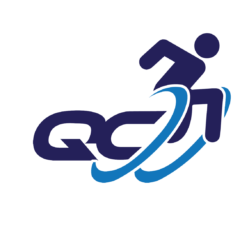is an Internet marketing term that refers to the generation of prospective consumer interest or inquiry into a business’ products or services through the Internet. Leads, also known as contacts, can be generated for a variety of purposes: list building, e-newsletter list acquisition, building out reward programs, loyalty programs or for other member acquisition programs.
Social Media
With growth of social networking websites, social media is used by organizations and individuals to generate leads or gain business opportunities. Many companies actively participate on social networks including LinkedIn, Twitter and Facebook to find talent pools or market their new products and services.[1]
Online Advertising
There are three main pricing models in the online advertising market that marketers can use to buy advertising and generate leads:
Cost per thousand (e.g. CPM Group, Advertising.com), also known as cost per mille (CPM), uses pricing models that charge advertisers for impressions — i.e. the number of times people view an advertisement. Display advertising is commonly sold on a CPM pricing model. The problem with CPM advertising is that advertisers are charged even if the target audience does not click on (or even view) the advertisement.
Cost per click advertising (e.g. AdWords, Yahoo! Search Marketing) overcomes this problem by charging advertisers only when the consumer clicks on the advertisement. However, due to increased competition, search keywords have become very expensive. A 2007 Doubleclick Performics Search trends report shows that there were nearly six times as many keywords with a cost per click (CPC) of more than $1 in January 2007 than the prior year. The cost per keyword increased by 33% and the cost per click rose by as much as 55%.
Cost per action advertising (e.g. TalkLocal, Thumbtack) addresses the risk of CPM and CPC advertising by charging only by the lead. Like CPC, the price per lead can be bid up by demand. Also, like CPC, there are ways in which providers can commit fraud by manufacturing leads or blending one source of lead with another (example: search-driven leads with co-registration leads) to generate higher profits. For such marketers looking to pay only for specific actions, there are two options: CPL advertising (or online lead generation) and CPA advertising (also referred to as affiliate marketing). In CPL campaigns, advertisers pay for an interested lead — i.e. the contact information of a person interested in the advertiser’s product or service. CPL campaigns are suitable for brand marketers and direct response marketers looking to engage consumers at multiple touchpoints — by building a newsletter list, community site, reward program or member acquisition program. In CPA campaigns, the advertiser typically pays for a completed sale involving a credit card transaction.
Opt-in Ad Units Examples
Co-registration advertising: The advertiser receives some or all of the standard fields collected by a site during the site’s registration process.
Full page lead generation: The advertiser’s offer appears as a full page ad in an HTML format with relevant text and graphics. The advertiser receives the standard fields and answers to as many as twenty custom questions that s/he defines.
Online surveys: Consumers are asked to complete a survey, including their demographic information and product and lifestyle interests. This information is used as a sales lead for advertisers, who purchase the consumer’s information if provided. The consumer may ‘opt-in’ to receive correspondence from the advertiser and is therefore considered a qualified lead.
Many private healthcare organizations use online lead generation as a way to contact their existing patients and to acquire new patients.
“The number of Cyberchondriacs has jumped to 175 million from 154 million last year, possibly as a result of the health care reform debate. Furthermore, frequency of usage has also increased. Fully 32% of all adults who are online say they look for health information “often,” compared to 22% last year.” said Harris Interactive in a study completed and reported in August 2010.[1]
1.
Wikipedia contributors. “Lead generation.” Wikipedia, The Free Encyclopedia. Wikipedia, The Free Encyclopedia, 22 Jun. 2017. Web.
9 Jul. 2017



